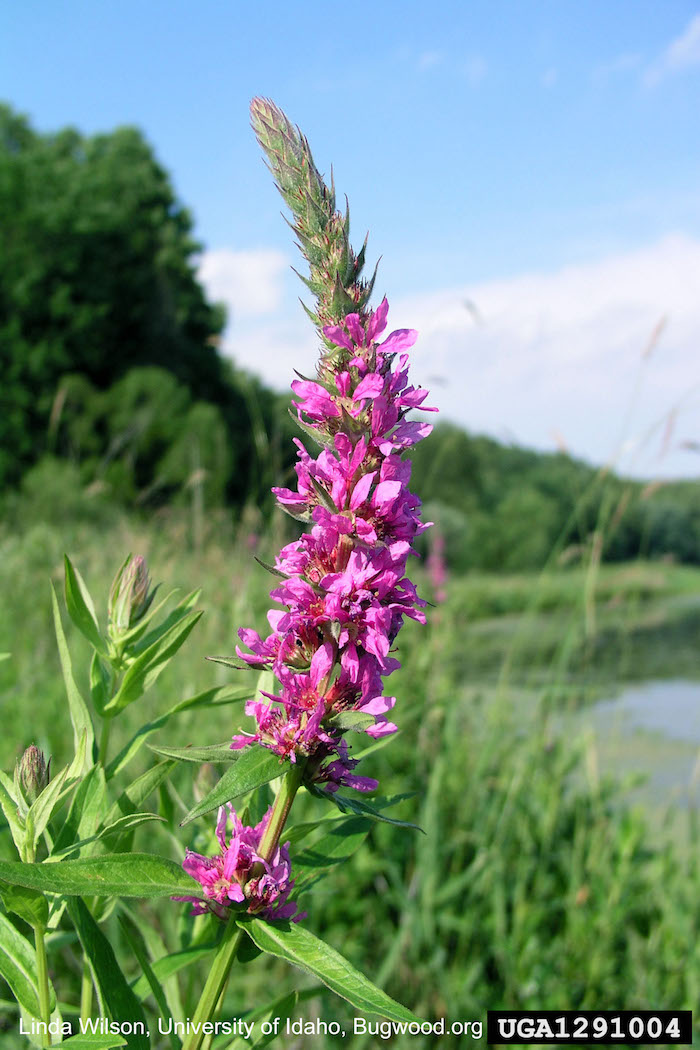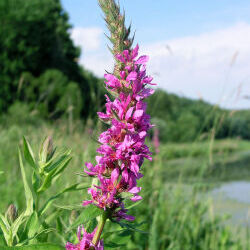
Priority: Eradicate
General: Plant that grows near or in water.
Height: Grows from 50cm to 2m tall.
Flowers: Purple flowers grow around a stem in a spike form. They have 5-7 petals.
Leaves/Stems: Leaves are lance-shaped can be either opposite or whorled around the stem. The stem has 4 sides.
Root: Taproot with additional horizontal roots. The root crown has buds that can sprout in the spring or if damaged.
Purple lythrum, Spiked Loosestrife, Blooming Sally, Rainbow weed
Fireweed (Epilobium augustifolium)
Differences: Fireweed flowers only have 4 lobes and leaves are arranged alternatively on the stem.
Where did it come from? Introduced from Eurasia to North American in early 1800’s.
Where does it grow here? Purple loosestrife prefers wet areas in low elevations and grows in ditches, irrigation canals, wetlands and on the shores of lakes and creeks. It needs wet conditions to reproduce, but a mature plant can survive on dry soils for years.
Reproduction: It reproduces by seeds, roots and also stem fragments. A single plant can produce 2.5 million seeds. Seeds do not drop from capsules until the fall when the air temperatures are colder. Seed can stay viable in the soil for up to 20 years.
When does it grow, flower & seed? Sprouts April-May. Flowers June-September. Seeds October.
Spreads By: The seeds are primarily spread by water but also dispersed by waterfoul, wildlife and people.
Plant Type: Perennial.
- Purple Loosestrife can form dense stands that outcompete native plants. They can clog canals and irrigation ditches.
- It can reduce forage value for wildlife and livestock.
- Review your property regularly for this species. Clean,Drain,Dry all boats and fishing gear to prevent the spread in lakes & streams.
- Treatment Remove small patches before it flowers & sets seed. Be very careful when removing plants that seeds and/or plant fragments do not spread by the water.
- Cover bare patches or disturbed soil by planting or seeding with non-invasives. Seed can stay viable in the soil for up to 20 years.
- Check areas where you have removed invasives for any new plants that year and in future growing seasons.
- Dispose of invasive plants responsibly. Bag them for disposal at the local landfill. Composting and burning are not recommended.
- Contact LRISS for specific treatment recommendations.
Invasive Species Centre: Purple Loosestrife
Southern Interior Weed Management Committee. 2016. Invasive Plants of the Southern Interior BC. 86pgs.
Okanagan Invasive Species Online website
E-Flora BC: Electronic Atlas of the Flora of British Columbia
